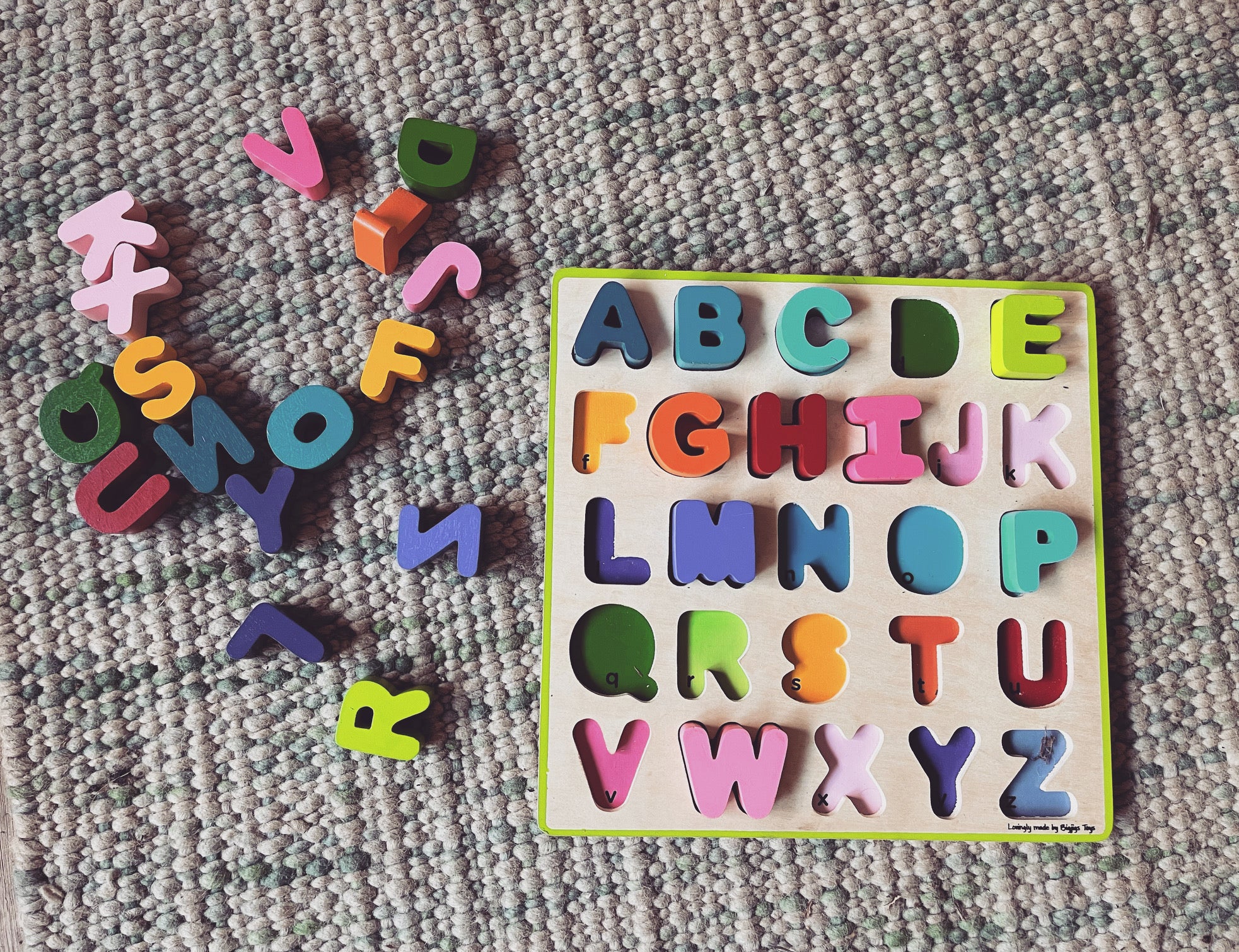Learning the alphabet
Should I bother teaching my child the alphabet?
There's a lot of debate going on at the moment about whether children should learn the alphabet. We seem to have shifted from focusing too heavily on learning letter names, to completely scrapping it and focusing only on learning letter sounds. This is really problematic because the reality is that we need to know both.

The top two predictors of reading achievement in the first years of school are:
* Phonemic awareness (the ability to isolate sounds in words)
* Letter knowledge
A study by Evans, Bell, Shaw, Moretti, & Page (2006), found that letter NAME knowledge was the best predictor of reading achievement in the first year of school. Whilst letter naming speed is the largest predictor of word-reading ability for first grade students. Think about it - letter names tell us the sounds of most letters. They therefore serve as an entry point into learning letter sounds.
Letter names that actually tell us their letter sounds:
First sound in letter name: B, D, J, K, P, T, V, Z
Last sound in letter name: F, L, M, N, R, S, X
Only 28% of consonant letters do not have the sound in their name
C, G (sometimes) & H,Q,W,Y (not at all)
So overall, that's a lot of letter names that are going to actually give your little one the letter sounds too. Therefore I question again whether it is a waste of time to learn letter names?
Alphabet puzzles
Alphabet puzzles are an incredibly effective way to teach your child the alphabet song and to visually learn the appearance of letters as they say the sounds. I have written all about how to use alphabet puzzles in a free PDF download. You can find it here:
I suggest you download it and give it a go with your little one.

Let me know what you think!
References:
Lucy Hart Paulson (2022), What the Science Says about Alphabet Learning, Assessment, and Instruction. The Reading League
Evans, Bell, Shaw, Moretti, & Page (2006), Letter Name, Letter Sounds and Phonological Awareness: An Examination of Kindergarten Children Across Letters and of Letters Across Children.

